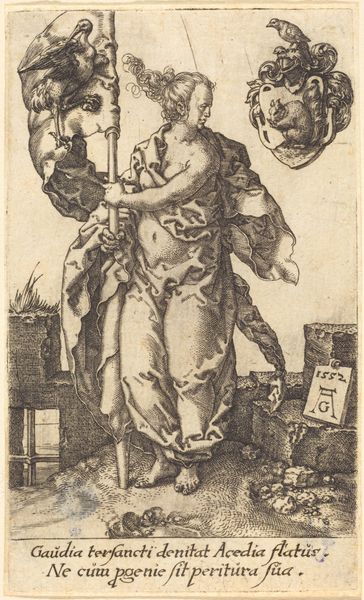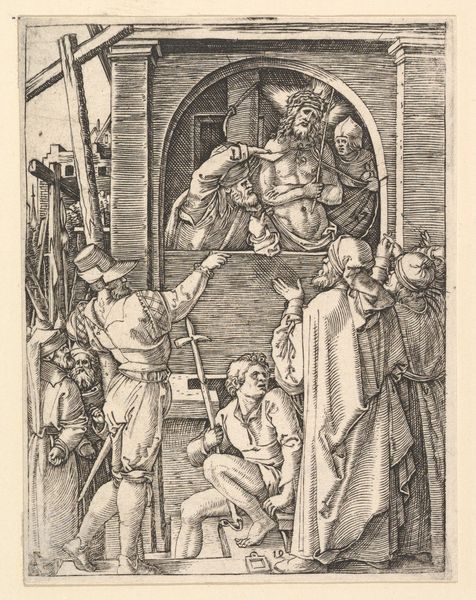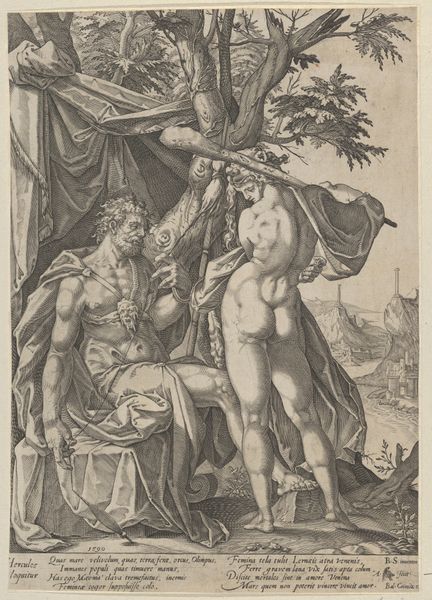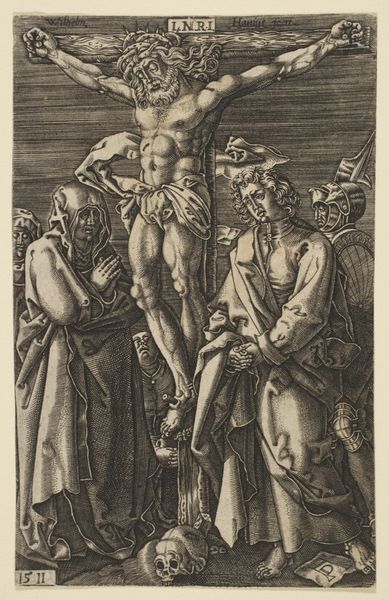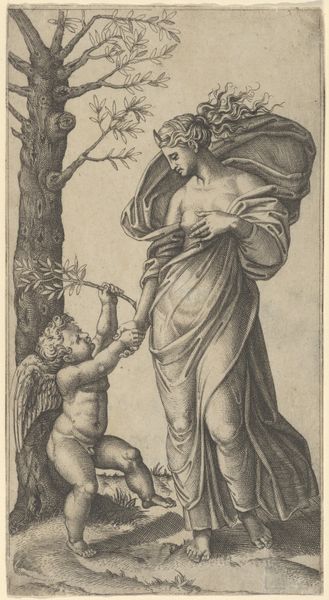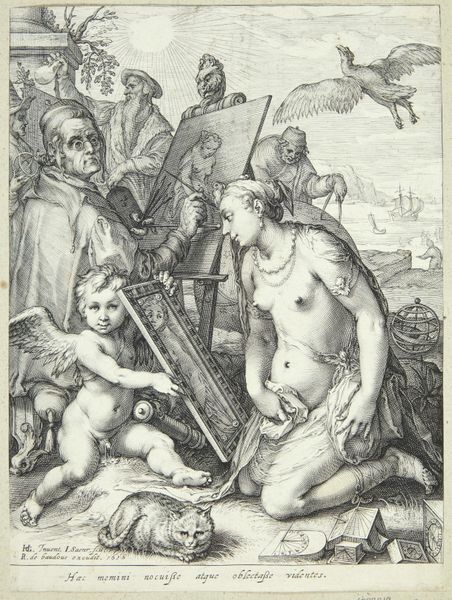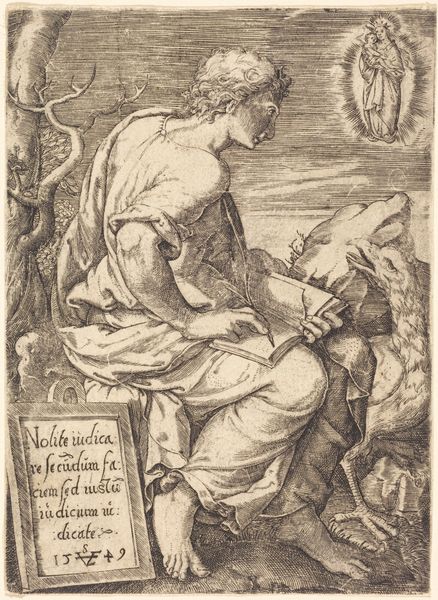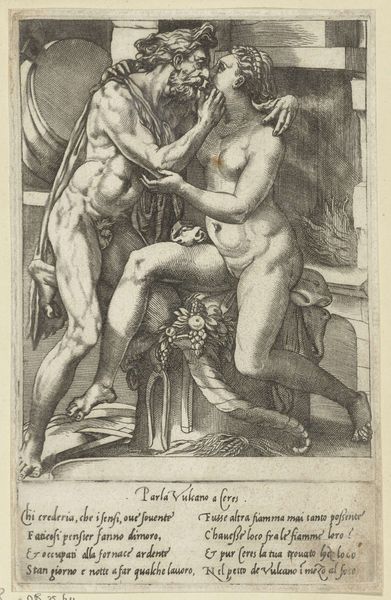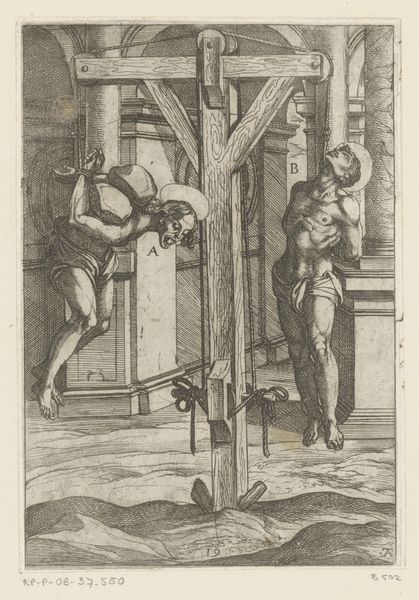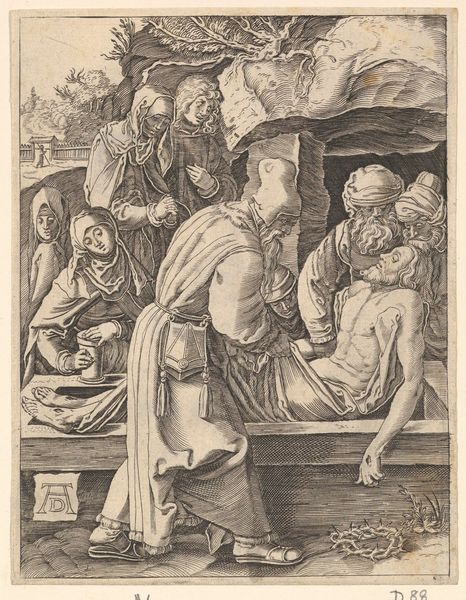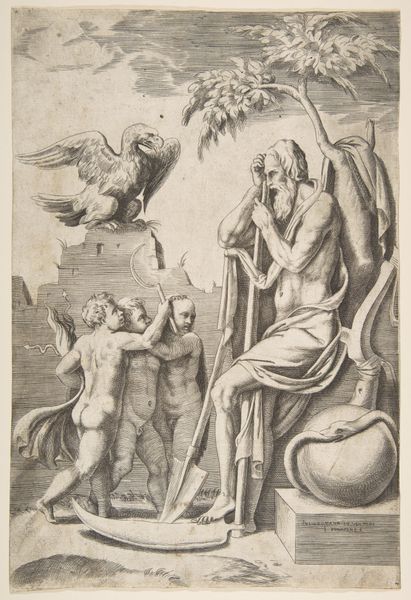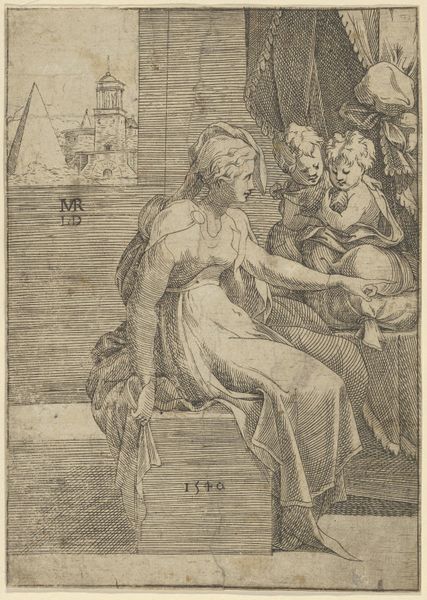
drawing, print, woodcut, engraving
#
drawing
#
medieval
# print
#
figuration
#
woodcut
#
men
#
history-painting
#
northern-renaissance
#
engraving
#
christ
Dimensions: Sheet: 4 5/8 × 2 15/16 in. (11.8 × 7.4 cm)
Copyright: Public Domain
Curator: I'm immediately struck by the raw emotion emanating from this print. There’s a visceral quality despite its small scale. Editor: Indeed. What we’re looking at is Albrecht Dürer's "The Man of Sorrows," created around 1509. It's a woodcut, part of his series known as "The Passion," and it's currently held here at the Metropolitan Museum of Art. Dürer was a master of printmaking, elevating it to a highly respected art form. Curator: The figure of Christ, the crown of thorns, the stigmata… these are potent symbols that resonate deeply within the Christian tradition, of course. The crown transforms Christ into an emblem of martyrdom. This isn't just about religious devotion; it's a complex iconography designed to evoke a profound psychological response. Editor: Absolutely. And note how Dürer positions Christ—bound, but standing, almost presented for judgement. The three crosses on the hill in the background tell the rest of the story of his impending doom. Curator: Dürer lived in a time of great social upheaval with the rise of the Reformation; this imagery tapped into the prevailing anxieties of the time. Prints like these became very important as affordable expressions of personal piety and also subtly of resistance against church authorities. It brought these intimate religious images to a wide audience that was starting to question papal authority. Editor: The landscape with crosses hints at a sense of foreboding. But even without any knowledge of Christian theology, the work transmits universal themes of suffering and resilience through the depiction of humanity and its universal suffering through powerful and poignant iconography. Dürer's talent lies in his skill to evoke suffering and spirituality beyond any time or culture. Curator: His skill with engraving allowed him to mass produce for the emerging merchant classes looking for status symbols that affirmed personal connections to Christ beyond the grand institutions. His artistic impact extended far beyond his workshop, shaping collective visual memory around faith and devotion. Editor: So, while the religious and historical context of this piece is highly meaningful, the core emotion that this small piece is meant to evoke stands the test of time, centuries later.
Comments
No comments
Be the first to comment and join the conversation on the ultimate creative platform.

